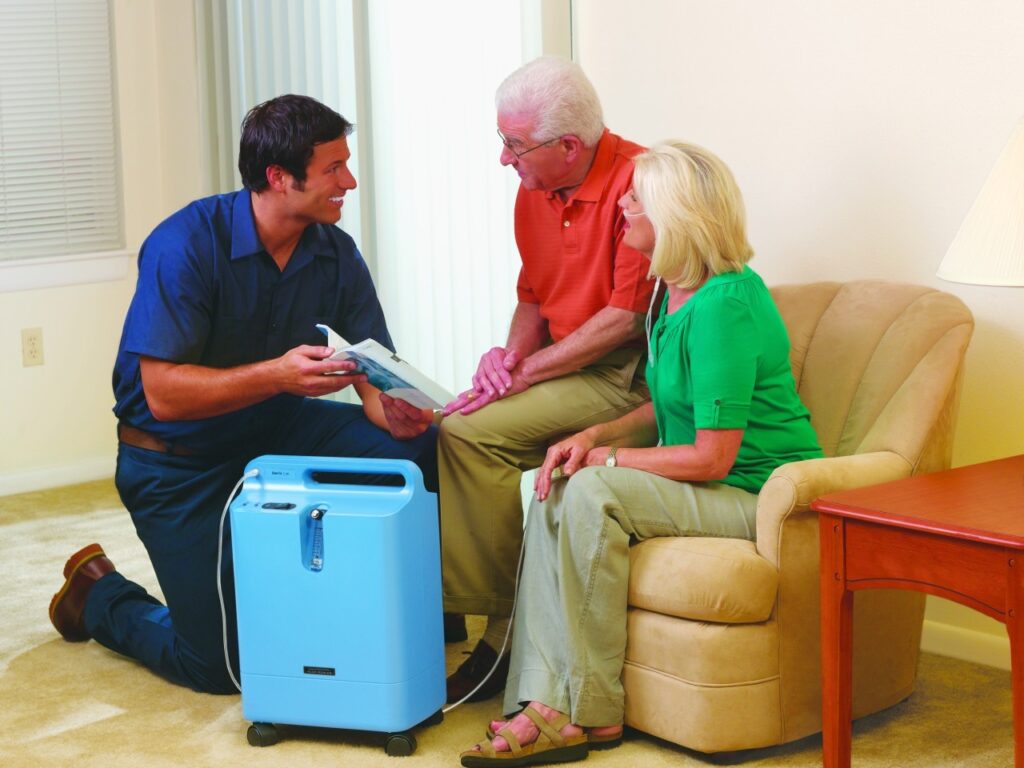The Philips Everflo Concentrator is a reliable and efficient device designed to provide oxygen therapy for individuals with respiratory conditions. With its user-friendly design and compact size, it has become a popular choice for home use. However, ensuring safety while using this medical equipment is paramount. This article will guide you through the essential steps and precautions needed to use the Philips Everflo Concentrator safely in a home environment.
Understanding the Philips Everflo Concentrator
Before diving into safety measures, it is crucial to understand how the Philips Everflo Concentrator operates. This device is designed to extract oxygen from the ambient air, concentrating it for therapeutic use. Unlike traditional oxygen tanks, the Everflo does not require frequent refills, making it a convenient option for long-term oxygen therapy.

The Philips Everflo Concentrator is a valuable tool for individuals requiring oxygen therapy at home. By understanding its operation, adhering to safety precautions, and maintaining regular communication with healthcare professionals, users can ensure a safe and effective experience. With proper care and attention, the Everflo can significantly enhance the quality of life for those with respiratory conditions, allowing them to lead more active and fulfilling lives.
Key Features
The Everflo Concentrator boasts several features that enhance its usability. It has a lightweight design, making it easy to move around the home. The device operates quietly, ensuring minimal disruption during use. Additionally, it comes with a built-in oxygen sensor and an easy-to-read flow meter, which helps users monitor their oxygen levels effectively. The concentrator also includes a robust filtration system that helps to purify the air intake, ensuring that the oxygen delivered is as clean as possible. This feature is particularly beneficial for those living in urban areas where air quality may be compromised.
Benefits of Home Use
Using the Everflo Concentrator at home allows patients to maintain their independence while receiving necessary oxygen therapy. It enables individuals to engage in daily activities without the constraints of portable oxygen tanks. Furthermore, the device’s continuous flow of oxygen ensures that patients receive a consistent supply, which is essential for managing their condition. The convenience of having a stationary unit at home means that patients can enjoy a more flexible lifestyle, whether it’s hosting family gatherings or simply relaxing in their garden. Moreover, the Everflo’s energy-efficient design not only helps reduce electricity costs but also contributes to a more sustainable environment, aligning with the growing emphasis on eco-friendly healthcare solutions.
Learn more on: Oxygen Concentrator Philips Everflo: FAQs and Tips
Setting Up the Everflo Concentrator
Proper setup is crucial for the safe operation of the Philips Everflo Concentrator. Following the manufacturer’s instructions will ensure that the device functions correctly and efficiently.
Choosing the Right Location
Selecting an appropriate location for the concentrator is the first step in the setup process. The device should be placed in a well-ventilated area, away from direct sunlight and heat sources. It is advisable to keep it at least 30 centimetres away from walls or furniture to allow for adequate airflow. Avoid placing the concentrator in small, enclosed spaces, as this can lead to overheating and potential malfunction. Additionally, consider the noise level of the environment; while the Everflo is designed to operate quietly, a peaceful setting can enhance the user’s comfort and overall experience.
Furthermore, ensure that the location is easily accessible for both the user and caregivers. This will facilitate routine maintenance, such as changing filters or checking the device’s performance indicators. If the concentrator is to be used in a bedroom, placing it a few feet away from the bed can help minimise any noise disturbances during the night, allowing for a more restful sleep. Always keep in mind the proximity to an oxygen supply line if applicable, as this will streamline the setup process and enhance usability. Learn more about disturbances on https://bmcmededuc.biomedcentral.com/articles/10.1186/s12909-024-06273-6
Connecting the Device
Once the location is determined, the next step is to connect the device. Plug the concentrator into a grounded electrical outlet to ensure safety. It is essential to use the power cord provided by the manufacturer to prevent any electrical hazards. After plugging it in, turn on the device and allow it to warm up for a few minutes before use. During this warm-up period, the concentrator will perform a self-check to ensure all systems are functioning correctly, which is an important step in maintaining the reliability of the device.
Moreover, it is advisable to familiarise yourself with the control panel and settings before beginning therapy. The Everflo Concentrator features user-friendly controls that allow you to adjust the oxygen flow rate according to your specific needs. Take the time to read the user manual thoroughly, as it contains valuable information on troubleshooting common issues and optimising the device’s performance. Understanding these features will not only enhance your confidence in using the concentrator but also ensure that you are getting the most out of your oxygen therapy experience.
Operating the Everflo Concentrator
Operating the Philips Everflo Concentrator is straightforward, but understanding the controls and settings is vital for optimal use.
Adjusting the Flow Rate
The flow rate of oxygen can be adjusted according to the physician’s prescription. The Everflo features a flow meter that allows users to set the desired flow rate easily. It is important to regularly check the flow rate to ensure it remains consistent with the prescribed levels. Any changes in the patient’s condition should be communicated to the healthcare provider, who may recommend adjustments to the flow rate.
Monitoring the Device
Regular monitoring of the Everflo Concentrator is essential to ensure it is functioning correctly. Users should periodically check the oxygen indicator light, which signals whether the device is operating within the expected parameters. If the light is not illuminated or if there are any unusual sounds coming from the machine, it is crucial to turn it off and consult the user manual or contact a healthcare professional.
Safety Precautions
Safety is paramount when using any medical device, and the Philips Everflo Concentrator is no exception. Adhering to specific precautions can help prevent accidents and ensure the device operates efficiently.
Avoiding Fire Hazards
Oxygen is highly flammable, and it is vital to keep the concentrator away from open flames and heat sources. Smoking should be strictly prohibited in the vicinity of the device. Additionally, flammable materials such as aerosols, cleaning agents, and oils should be stored away from the concentrator to minimise the risk of fire. Click here to find more about flammable.
Regular Maintenance
Proper maintenance of the Everflo Concentrator is essential for its longevity and safe operation. Users should regularly clean the device according to the manufacturer’s guidelines, which typically include wiping down the exterior and replacing the filters as needed. Regular maintenance not only ensures safety but also enhances the efficiency of the concentrator.
Emergency Procedures
Being prepared for emergencies is crucial when using the Philips Everflo Concentrator. Understanding what to do in various situations can help mitigate risks and ensure the safety of the user.
Power Outages
In the event of a power outage, it is important to have a contingency plan in place. Patients who rely on the Everflo Concentrator should consider having a backup oxygen supply, such as portable oxygen tanks, readily available. Additionally, informing family members or caregivers about the situation can ensure that assistance is provided promptly.
Device Malfunction
If the concentrator malfunctions or displays warning lights, users should turn off the device immediately and unplug it from the power source. It is advisable to consult the user manual for troubleshooting tips. If the issue persists, contacting a qualified technician or the manufacturer’s customer service for assistance is recommended.
Consulting Healthcare Professionals
Regular consultations with healthcare professionals are essential for individuals using the Philips Everflo Concentrator. These professionals can provide valuable insights into the patient’s condition and make necessary adjustments to the oxygen therapy plan.

Regular Check-ups
Patients should schedule regular check-ups with their healthcare provider to monitor their respiratory health. These appointments allow for adjustments to the flow rate, assessments of lung function, and discussions about any concerns related to the use of the concentrator.
Education and Training
Healthcare providers can also offer education and training on the safe use of the Everflo Concentrator. Understanding how to operate the device, recognise warning signs, and implement safety measures is crucial for patients and their caregivers. This knowledge empowers users to manage their oxygen therapy effectively and safely.

